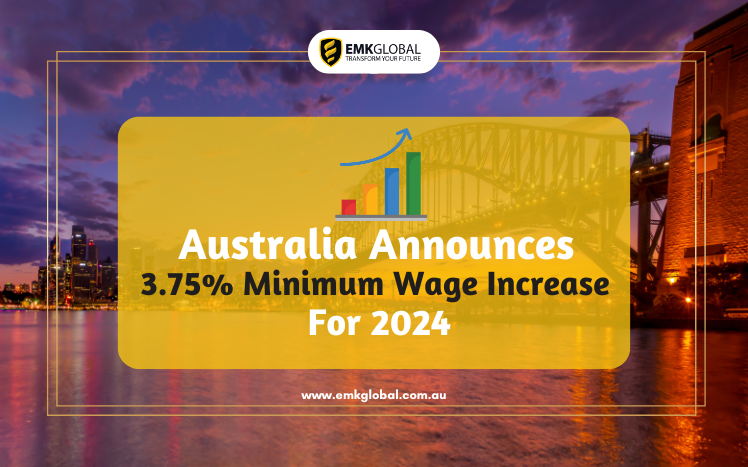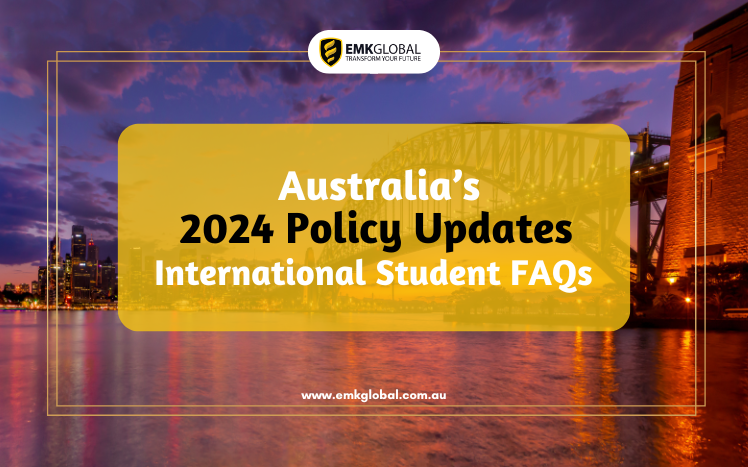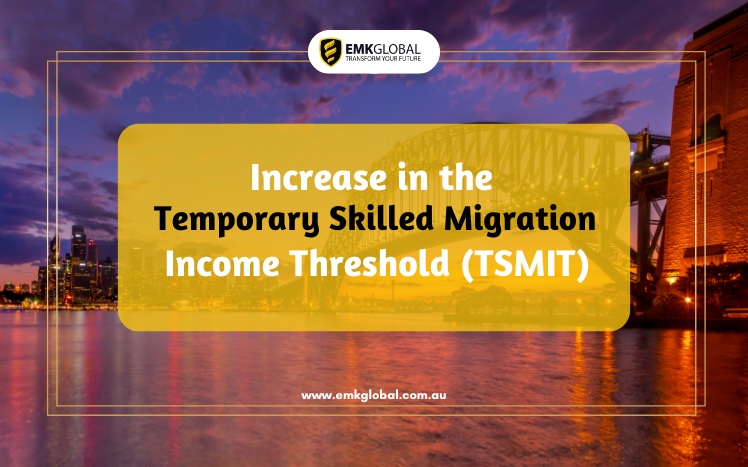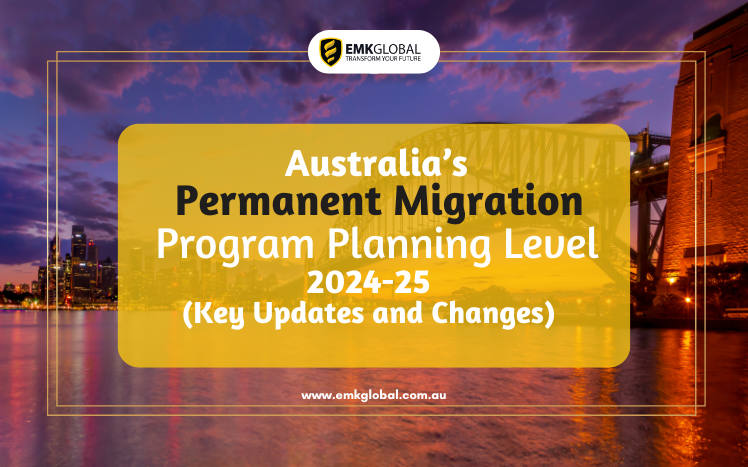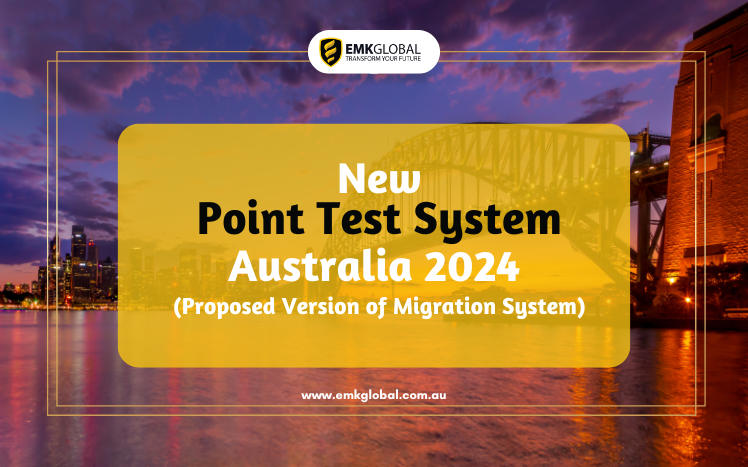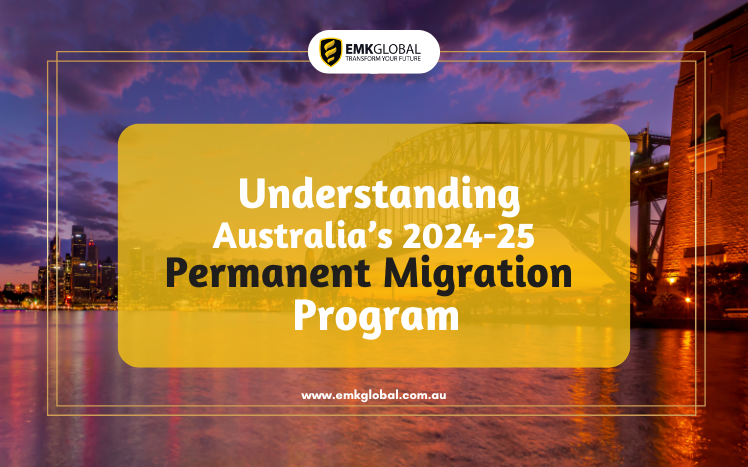A Temporary Graduate Visa (subclass 485) is designed for international students who have recently graduated from an Australian institute. This visa allows international graduates to live, study, and work in Australia temporarily.
New Migration Strategy: Major Changes to the 485 Visa
As of December 11, 2023, the Australian Government has introduced significant changes to the 485 visa. These changes include:
- New age limit.
- New English language requirements.
- New stay duration for international students.
- Changes to the Temporary Graduate Visa streams.
- Post-study work extension rights.
Frequently Asked Questions About 485 Visa Updates
What are the new changes in a 485 visa in 2024?
Here are the highlights of the latest updates on 485 visas for international students in 2024:
- Length of Stay: Reduced for international graduates.
- Age Limit: Decreased from 50 to 35 years.
- Graduate Work Stream: Renamed to the ‘Post-Vocational Education Work’ stream.
- Post-Study Work Rights: No further opportunities for extension.
- Replacement Stream: Will end.
- English Language Requirements: Increased from 6.0 to 6.5 (IELTS).
- Genuine Temporary Entrant Test: Replaced with the new “Genuine Student Test.”
How long can I stay under a 485 visa (Post-Study Workstream)?
The stay duration for the Temporary Graduate visa has been shortened based on the qualification level:
| Qualification | Period of Stay |
| Bachelor degree | Two years |
| Masters by coursework | Three years |
| Masters by research | Three years |
| PhD | Three years |
Holders of Hong Kong and British National Overseas passports can stay for up to 5 years.
What is the updated duration of the Post-Higher Education Work Stream (485 visas) for Indian nationals?
The Australian-Indian Economic Cooperation and Trade Agreement (AI-ECTA) specifies the stay duration for Indian nationals as follows:
| Qualifications | Updated Durations |
| Bachelor’s degree (including honors) | up to 2 years |
| Bachelor’s degree (with first class honors in STEM, including ICT) | up to 2 years |
| Masters (coursework, extended and research) | up to 3 years |
| Doctoral degrees (PhD) | up to 4 years |
What is the new age limit for a 485 visa in 2024?
Starting from July 1, 2024, the age limit for the
the temporary graduate visa stream (subclass 485) will be reduced from 50 to 35 years.
What are the new English language requirements for a 485 visa in 2024?
The Department of Home Affairs is set to increase the English language requirements from an overall IELTS score of 6.0 to 6.5 for a 485 visa in Australia.
What are the English language requirements for Hong Kong and British National (Overseas) Passport Holders?
For passport holders from Hong Kong or the British National (BNO) category, an IELTS score of at least 6.0 is required.
Can I apply for a 485 Visa offshore?
No, you cannot apply for a 485 visa offshore. You must be within Australia to apply for this visa.
Does a 485 visa lead to permanent residency in Australia?
No, a 485 visa does not directly lead to permanent residency in Australia. However, candidates can obtain PR by applying for skilled migration visas such as subclass 189 or 190.
What are the new changes to the Temporary Graduate Visa streams?
Starting on July 1, 2024, the changes to Temporary Graduate Visa streams will be:
- Graduate Work Stream: Renamed to the Post-Vocational Education Work Stream.
- Post Study Work Stream: Renamed to the Post Higher Education Work Stream.
- Second Post-Study Work Stream: Renamed to the Second Post Higher Education Work Stream.
- Replacement Stream: Will end in 2024.
What is the re-alignment of the Temporary Graduate visa streams to levels of study?
Here is the re-alignment of the Temporary Graduate visa streams to levels of study:
- To apply for the Post-Vocational Education Work stream (former Graduate Workstream), you must have an associate’s degree, diploma, or trade qualification.
- Your qualifications must align with your nominated occupation on the Medium and Long-Term Strategic Skills List (MLTSSL).
- If you have a degree level or higher qualification, you can apply for the Post-Higher Education Work stream (former Post-Study Work stream).
What are the eligibility criteria for the Temporary Graduate visa (subclass 485) before July 1, 2024?
Applications lodged before July 1, 2024, for the Temporary Graduate visa (subclass 485) must meet the following eligibility criteria:
- Applications must be lodged before July 1, 2024, mentioning candidates’ completed qualifications.
- Applications must be according to Australian study requirements, including proof of the course completion date from their educational institution.
- The completion date refers to the date on which all the academic requirements for a degree, diploma, or trade qualification are met. It does not include the official awarding of the degree as per Migration Regulations 1994, regulation 1.15F(2)).
- Candidates must meet the eligibility requirements for the specific stream they have applied for.
- Important Note: Applications submitted on or after July 1, 2024, will be assessed according to the new eligibility requirements.
Is the Post-Study Work extension for the 485 visa still available in 2024?
No, the Government has announced that from mid-2024, the extension of post-study work rights will no longer be provided to international graduates.
What are the common mistakes to avoid while applying for a Temporary Graduate visa?
International students often make some of the most common mistakes while applying for a 485 visa. Here is the list of those mistakes that you must avoid:
- Not applying on time.
- Not choosing the right visa stream.
- Failure to submit all required documents.
- Not meeting the study requirements.
- Not being at the right place while applying for a 485 visa.
Tips for Avoiding Common Mistakes When Applying for a 485 Visa
Below are some of the most important tips and tricks that you must follow to submit a flawless visa application:
- Submit the visa application for 485 within six months of the completion date of your study program.
- Apply for the right stream that aligns with your interests and preferences.
- Submit all the required and supporting documents while lodging your application for a 485 visa.
- You must meet the Australian study requirements to approve your visa application successfully.
- You must be within Australia at the time of application submission.
If you are still confused, consider seeking professional advice.



